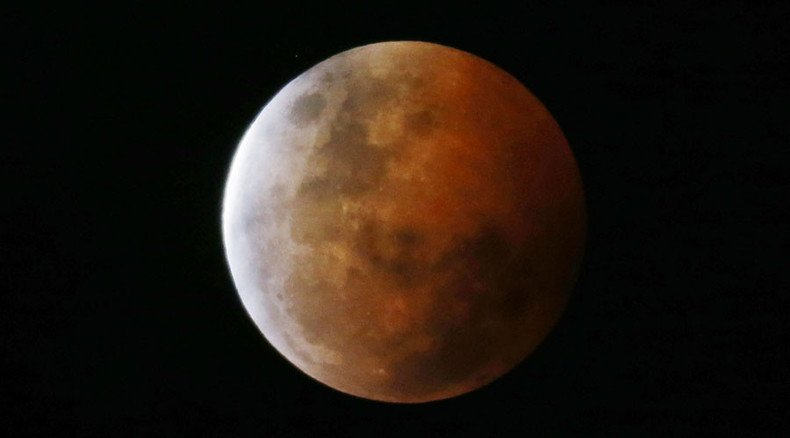Stargazers will be fascinated on Sunday night, as a supermoon eclipse is to occur for the first time since 1982. The spectacle is rather rare: the next one is expected only in 2033, and the phenomenon took place only five times in the previous century.
The eclipse, which astronomers promise to be a long one lasting over 70 minutes, will be visible to North and South America, Europe, Africa, and some regions of West Asia and the eastern Pacific, according to NASA.
If the skies are clear, the celestial display should be visible after nightfall. The eclipse will begin at 8:11 pm ET, Sunday (12:11 am GMT, Monday), with a peak at 10:47 pm ET (02:47 am GMT). Supermoons are observable when the moon comes very close to Earth, making it appear 14 percent larger and 30 percent brighter than usual.
“Because the orbit of the moon is not a perfect circle, the moon is sometimes closer to the Earth than at other times during its orbit,” Noah Petro, deputy project scientist for the Lunar Reconnaissance Orbiter at NASA’s Goddard Space Flight Center in Greenbelt, Maryland, said.
“When the moon is farthest away it’s known as apogee, and when it’s closest it’s known as perigee. On September 27, we’re going to have a perigee full moon – the closest full moon of the year,” Petro added.
READ MORE: In the shadow of the moon: Spectacular plane’s view of the solar eclipse (VIDEO)
NASA has revealed that the celestial event poses a challenge for its Lunar Reconnaissance Orbiter (LRO). The solar-powered robotic spacecraft has been in orbit around the moon for over six years, aiming to thoroughly map the lunar orb, as well as scout for landing sites and resources. The mission was originally planned to last only two years.
“We have a method and it works well,” said Dawn Myers, the science operations planner at Goddard, in another statement. “It’s always stressful during the approach of the eclipse, but we follow the same procedures every time and we haven’t had any trouble.”
Myers was referring to the fact that LRO has successfully made it through three other lunar eclipses in the past 17 months, as scientists have developed a strategy to gradually shutoff of its instruments. Yet, not all of the satellite’s observational capability will be curtailed, as the eclipse will provide the spacecraft with a “very unique set of measurements.”
However, here on Earth the rare celestial event has also sparked some angst. Apocalyptic rumors have prompted the Mormon Church to issue a statement calling on its 15 million faithful to “avoid being caught up in extreme efforts to anticipate catastrophic events.”

